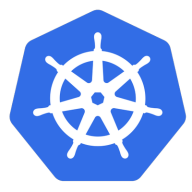

Splunk Observability Cloud and Kubernetes compete in the monitoring and container orchestration category, respectively. Splunk Observability Cloud stands out due to its advanced analytics and problem-solving capabilities, while Kubernetes excels with its scalability and automation.
Features: Splunk Observability Cloud offers advanced log analytics, custom dashboards, and seamless data integration. Kubernetes provides scalability, flexibility, and automation for containerized applications, boasting features like self-healing and auto-scaling.
Room for Improvement: Splunk Observability Cloud could enhance integration capabilities, provide more user-friendly documentation, and improve cost-effectiveness. Kubernetes could improve ease of use with its learning curve and management complexity, and benefit from better dashboard features and third-party solution compatibility.
Ease of Deployment and Customer Service: Splunk Observability Cloud supports deployment across on-premises, hybrid, and public cloud environments with generally satisfactory technical support. Kubernetes is versatile in deployment scenarios but often requires skilled personnel, with community support available due to its open-source nature.
Pricing and ROI: Splunk Observability Cloud is considered costly but often provides ROI through increased productivity and efficiency. Kubernetes, being open-source, offers a cost-effective option though operational costs may arise depending on infrastructure scale.


Kubernetes (K8s) is an open-source system for automating deployment, scaling, and management of containerized applications.
It groups containers that make up an application into logical units for easy management and discovery. Kubernetes builds upon 15 years of experience of running production workloads at Google, combined with best-of-breed ideas and practices from the community.
Splunk Observability Cloud combines log search, data integration, and dashboards for seamless monitoring, enhancing infrastructure visibility and security. Its cloud integration and scalability support diverse environments, improving operational efficiency.
Splunk Observability Cloud offers comprehensive monitoring tools with user-friendly interfaces, enabling end-to-end infrastructure visibility. Its real-time alerting and predictive capabilities enhance security monitoring, while centralized dashboards provide cross-platform visibility. Users benefit from fast data integration and extensive insights into application performance. Despite its advantages, improvements could be made in integration with other tools, data reliability, scalability, and cost management. Users face challenges in configuration complexity and require better automation and endpoint protection features. Enhancing AI integration, alerts, and adaptation for high-throughput services could further improve usability.
What are the key features of Splunk Observability Cloud?In industries like finance and healthcare, Splunk Observability Cloud is implemented for application performance monitoring and infrastructure metrics. Its ability to track incidents and analyze machine data benefits network infrastructure, while distributed tracing and log analysis aid in tackling security threats. Organizations often integrate it for compliance and auditing purposes, enhancing visibility into network traffic and optimizing performance.
We monitor all Container Management reviews to prevent fraudulent reviews and keep review quality high. We do not post reviews by company employees or direct competitors. We validate each review for authenticity via cross-reference with LinkedIn, and personal follow-up with the reviewer when necessary.